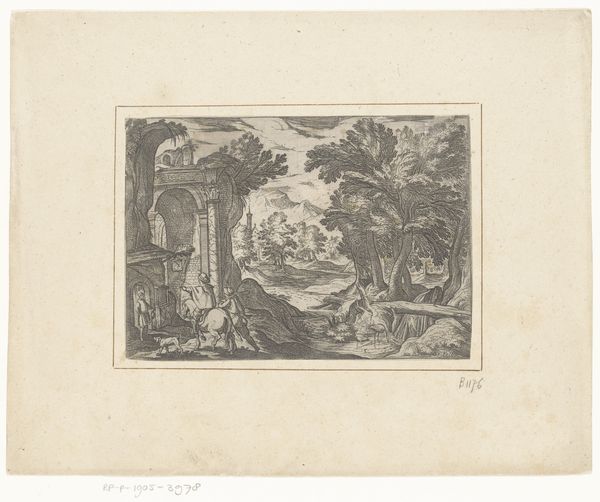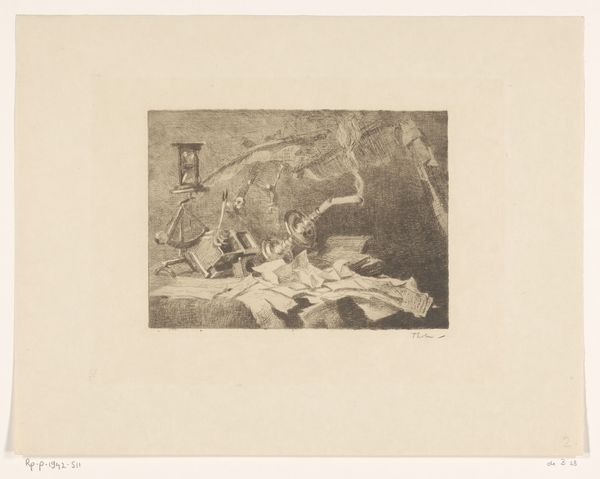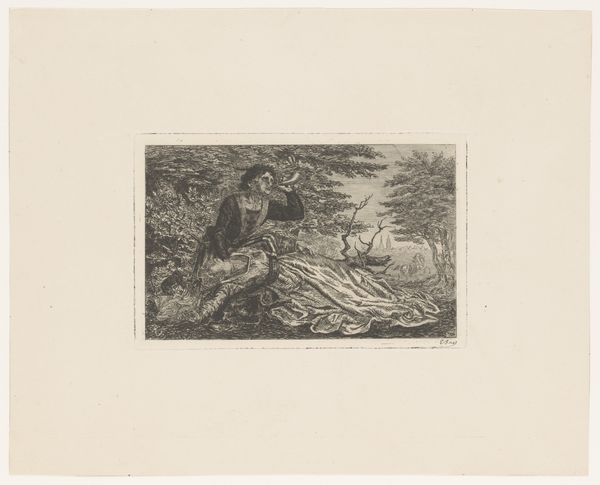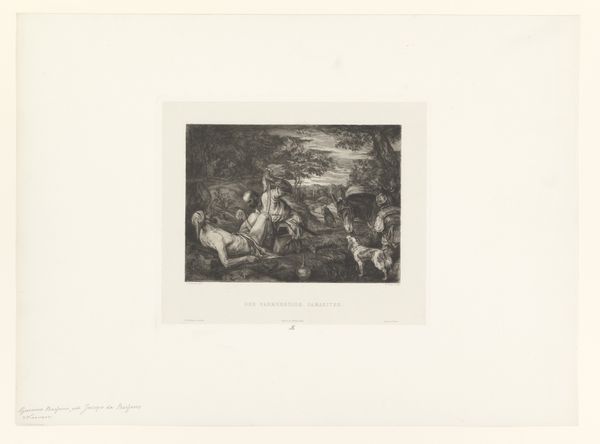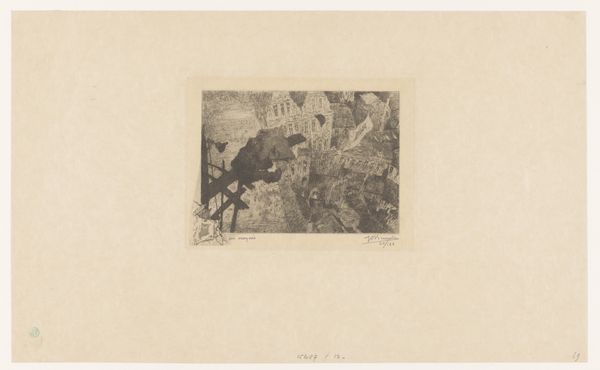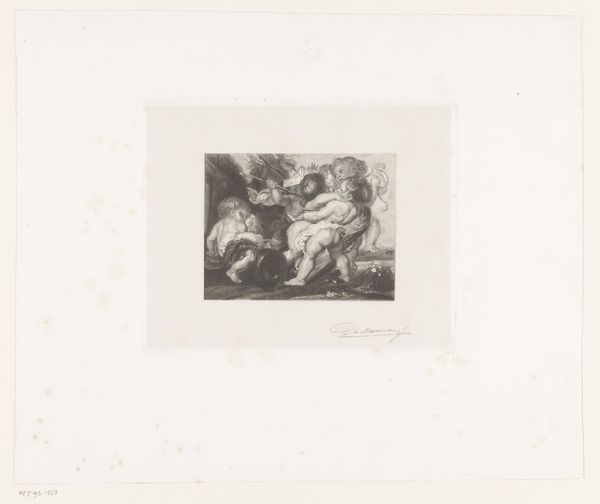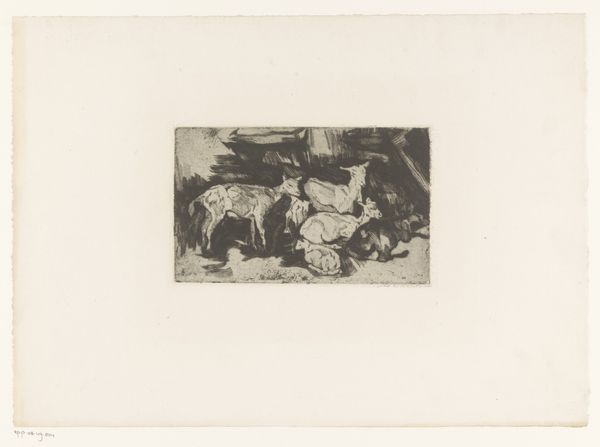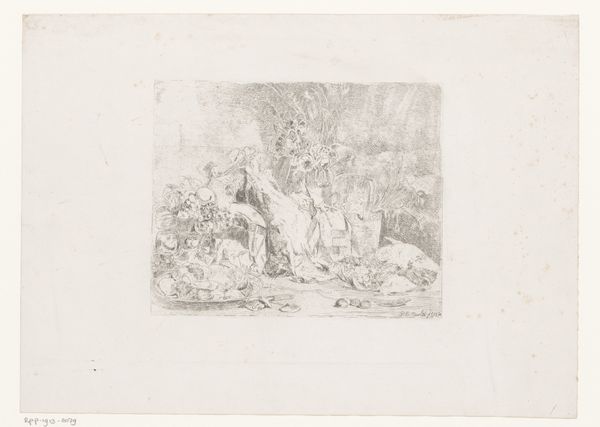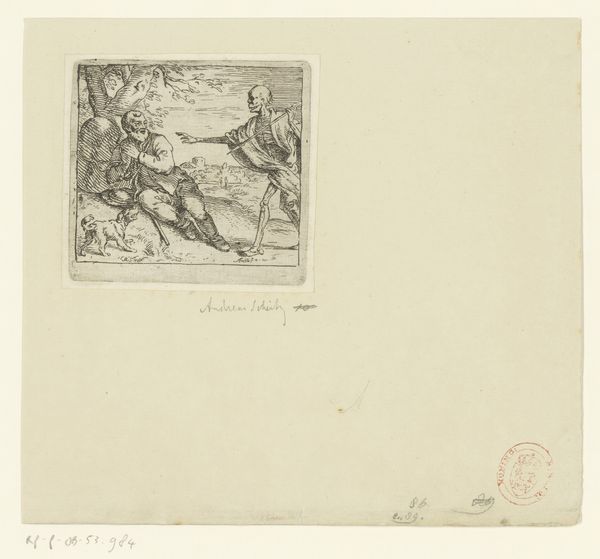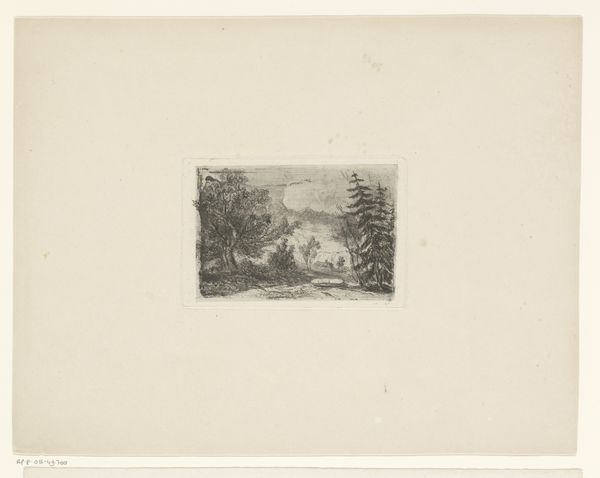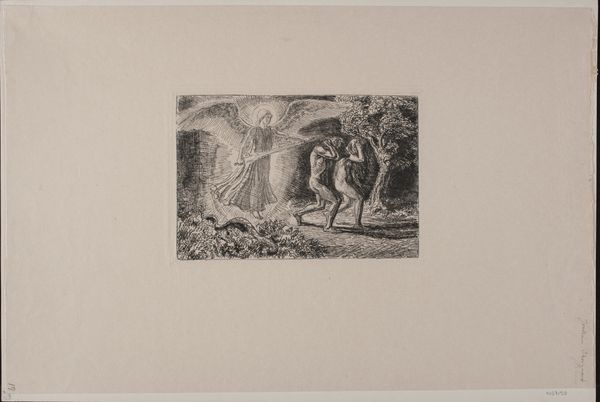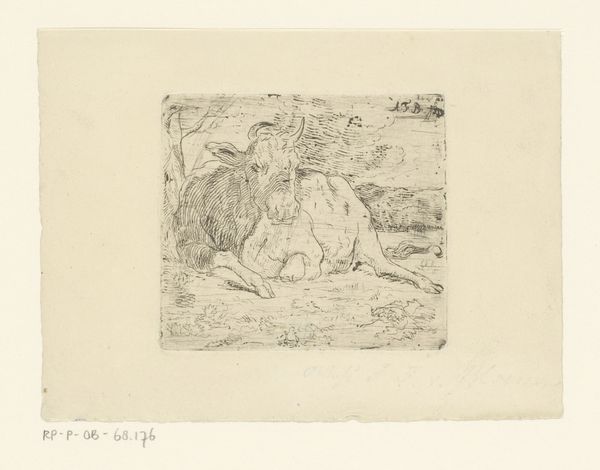
Dimensions: height 107 mm, width 125 mm
Copyright: Rijks Museum: Open Domain
Curator: Here we have a print, "Aartsengel Michaël wijst Hagar een bron," or "Archangel Michael Shows Hagar a Well," by Johann Philipp Lemke, dating from between 1739 and 1810. Editor: It's remarkable, isn't it? The composition feels heavy with shadow, giving a somber almost desperate mood. The angel's form offers the only significant source of light, which makes the print both unsettling and hopeful simultaneously. Curator: Yes, look closely at the technique. This engraving on paper showcases the incredible detail Lemke achieved through meticulously incised lines, consider how the material supports the reproduction of imagery and storytelling for a broader audience beyond painting or sculpture patrons. Editor: Absolutely. And within that story is a poignant depiction of Hagar, a woman of color, cast out into the desert with her child. To see the archangel intervening speaks volumes. We need to contextualize this within broader narratives of displacement, and consider its implications then, as well as now, regarding the treatment of women and marginalized people. Curator: The linear quality achieved with ink is what grounds the viewer, the engraving technique facilitates the image and its message spreading—printed on paper making art more accessible and reproducible beyond traditional constraints, creating dialogue with an expanded audience. Editor: It’s impossible to ignore that this biblical scene, however divinely inspired within the narrative, also highlights social power dynamics at play. Consider the labor involved in producing these prints. How were those means of production—paper, ink, engraving tools—sourced? Who benefitted from their circulation, and whose stories were deemed worthy of reproduction? Curator: Examining the circulation of prints reveals socio-economic relationships. Paper production itself tells a story about resource use and its broader impact—paper quality, the types of inks. These factors affected the image’s accessibility, affordability, and durability which then impacted reception by different groups within society. Editor: Precisely. By interrogating the processes and considering the historical context, we begin to unpack layered meanings relevant even centuries later, particularly regarding representations of religion and race. It invites critical examination of these same patterns prevalent in the modern world, allowing us to use art to encourage needed intersectional dialogues and question inherent structures of power. Curator: Seeing it through the lens of the production means adds another layer to our understanding, helping to highlight socio-economic and practical implications, which inevitably colored the message the image attempted to convey. Editor: A fruitful intersection. We both see new dimensions added to this depiction and it makes me more empathetic.
Comments
No comments
Be the first to comment and join the conversation on the ultimate creative platform.
